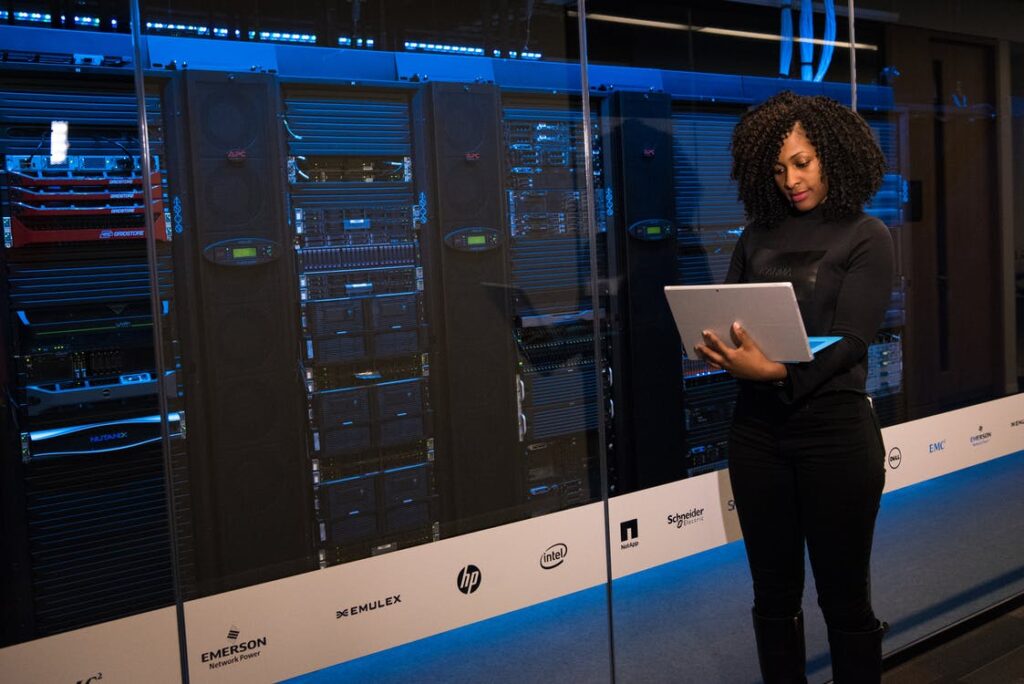Firewall as a service (FwaaS) is a type of managed security service offered by vendors like Palo Alto Networks, Fortinet, Cisco Systems, and Check Point Software Technologies.
Firewall as a Service (FWaaS) offers a way to secure networks without having to buy hardware, manage it, and pay for ongoing maintenance. In fact, FWaaS eliminates the need for firewalls altogether.
Instead, customers use software running on servers in the cloud to provide the same level of protection as traditional firewalls.
The concept of the Firewall as a Service (FWaaS) isn’t about simply virtualizing a network firewall appliance. Rather, it provides a complete set of features that are like what you’d find in a next-generation firewall (NGF). These include access controls such as URL blocking, advanced threat prevention, IPS, and DNS security.
With Firewall as a Service (FWaaS), management of the service is centralized from a single interface, enabling organizations to overcome the challenges associated with change control, patch management and coordination of outages.
Policy management is simplified because you don’t have to worry about managing multiple devices and ensuring consistency across the organization where users connect.
How Is Firewall as a Service (FWaaS) Different from a Regular Firewall?

Traditional on-premises firewall was designed and programmed to examine network traffic for corporate offices, and they still are today. But because the scope of threats has evolved over the years, this model isn’t enough to keep up with modern day cyberattacks.
In fact, the number one reason why companies fail to secure their networks is due to outdated technology. According to Gartner, 60% of attacks target software applications, while 30% target physical infrastructure. This makes it clear that the old paradigm is obsolete.
As the scope of threats continues to evolve, traditional firewalls struggle to keep up. For example, if you’re protecting against malware, there’s nothing stopping attackers from compromising legitimate accounts within the organization.
Or if you’re trying to prevent ransomware from spreading, you might find yourself struggling to stop malicious code from reaching the endpoint.
This is where the next generation of firewalls come into play. Cloud native firewalls like Firewall as a Service (FWaaS) offer a scalable solution that allows organizations to protect their entire network, regardless of location. They can even help identify zero days, since they can monitor every aspect of the network.
Firewall as a Service (FWaaS)vs. NGFWs

The advent of software-as-a-service (SaaS), or cloud computing, has opened up a world of possibilities for businesses. Applications are now accessible anywhere there is an internet connection, and employees can access them anytime they want without having to wait for IT to install and configure it on their computers.
However, internet traffic must be delivered locally to provide a fast user experience. Internet traffic destined for remote locations needs to be routed back to corporate data centers where the application resides. This requires setting up network address translation (NAT) firewalls on each end device, which can be costly and complex.
NGFW vendors claim their products allow companies to extend the reach of their internal networks into the public internet, allowing remote users to connect securely to corporate resources. But this is misleading – NGFWs were never intended to handle internet traffic. They were designed to route traffic within the organization.
Why Do Companies Need Firewall as a Service (FWaaS)?

As companies continue to adopt cloud infrastructure providers like Amazon Web Services (AWS), they are looking to improve security by adding network access control (NAC). But legacy network devices weren’t built to handle the needs of today’s IT environments.
These devices were originally designed to protect networks from external threats, including hackers trying to break into internal systems. They weren’t intended to secure data centers or cloud infrastructures. And even though they’re often referred to as “firewall,” they don’t actually do much to stop attacks.
The lack of flexibility and performance issues associated with legacy NGFW appliances make it difficult to scale out and operate effectively in distributed environments. This leads to increased costs and operational complexity. In fact, according to Gartner, the average cost of ownership of a legacy NGFW appliance is $1 million per device.
To address these problems, enterprises are turning to a next generation firewall (NGFW) solution. Unlike legacy NGFW appliances, NGFW solutions provide native connectivity to multiple protocols and platforms, allowing you to easily provision and manage remote users and mobile workers.
They also provide a consistent user experience regardless of location, enabling employees to securely connect to corporate resources while working remotely.
But there’s another problem with legacy NGFW devices. Because they were built decades ago, they don’t offer the level of security needed to keep up with today’s sophisticated cyberattacks.
Legacy NGFW devices were never designed to block malware, ransomware, DDoS attacks, or insider threat activity. Instead, they focus primarily on preventing unauthorized access to sensitive information. To better defend against those types of threats, you need to use a next generation firewall (NFW) solution.
But what about the rest of your network? What about the firewall that protects your data center? If you want to enforce policies and ensure compliance across your entire environment, you’ll need something else. You need a firewall as a service (FWaaS).
A Firewall as a Service (FWaaS)provides the firewall functionality you need without having to build one yourself. With a Firewall as a Service (FWaaS), you can quickly deploy a secure perimeter around your network. You can also extend the protection to include your cloud infrastructure, giving you complete visibility and control over both physical and virtual assets.
And because a Firewall as a Service (FWaaS)solution doesn’t require you to buy hardware, you won’t have to worry about obsolescence. Your investment will pay off long term, providing value well beyond initial deployment.
How Does FWaaS Work?

FWaaS offers a complete software-based solution for securing remote access to enterprise networks and data. By leveraging the latest advances in network virtualization technology, Firewall as a Service (FWaaS) provides a comprehensive approach to providing centralized, policy-driven control over how employees remotely connect to corporate resources.
Firewall as a Service (FWaaS) delivers visibility into VPN sessions, allowing IT administrators to monitor, analyze, and enforce policies across multiple devices and locations.
The software-only architecture of Firewall as a Service (FWaaS) eliminates the need for physical firewalls and other security appliances, enabling organizations to scale up or down based on demand while maintaining consistent, high-performance levels. This elasticity makes it easy for companies to quickly respond to changing threat scenarios, such as phishing campaigns, insider threats, and targeted attacks.
Benefits of FWaaS

The firewall as a service market is expected to grow to $2.6 billion by 2022 according to Gartner. This growth reflects both increasing adoption of public clouds and increased security concerns among enterprises. In addition, there are many challenges facing traditional firewalls today, such as scalability, cost, management complexity, and lack of visibility into what is happening inside the network.
FWaaS addresses these issues by providing a comprehensive set of features that allow organizations to quickly deploy, manage, monitor, and secure their networks across physical, virtual, and hybrid environments. These capabilities include:
- Proxy-based architecture: FWaaS dynamically inspects traffic for each user, device, location, and application to identify threats.
- It natively inspects SSL/TLS traffic at scale to detect malware hidden inter network traffic and enable granular policies spanning multiple layers based on network app, cloud app, and url.
- Cloud IPS: As the first line of defense against cyberattacks, a cloud-based firewall protects users from reaching malicious domains. It optimizes the DNS resolution to provide the best user experience to help improve cloud application performance, which is especially critical for CDN-based apps.
- DNS Security and Control: As the first line of defense, it secures DNS resolution to prevent access to malicious sites.
It optimizes DNS resolution to provide a better user experience and cloud application perfectivity, which is especially critical for CDN-based apps.
How the Ace Public Cloud Firewall Can Help

The Ace Public Cloud firewall is designed to help organizations achieve zero trust across all devices and applications. This includes ensuring that employees are protected while accessing sensitive data, such as financial documents, intellectual property, customer records, and internal networks.
By leveraging the power of the Ace Public Cloud Platform, organizations gain unprecedented control over network traffic and device access and can quickly implement changes without having to worry about downtime. In addition, the solution reduces complexity and costs associated with managing firewalls and VPNs.
- Sports Betting Website Development – Analytics and Insights - July 13, 2024
- Why Regular best automobile detailing services Is a Must for Car Owners - May 15, 2024
- Catalog Printing – Businesses Have Just Got Better with Wholesale - October 5, 2023



Post Your Thoughts